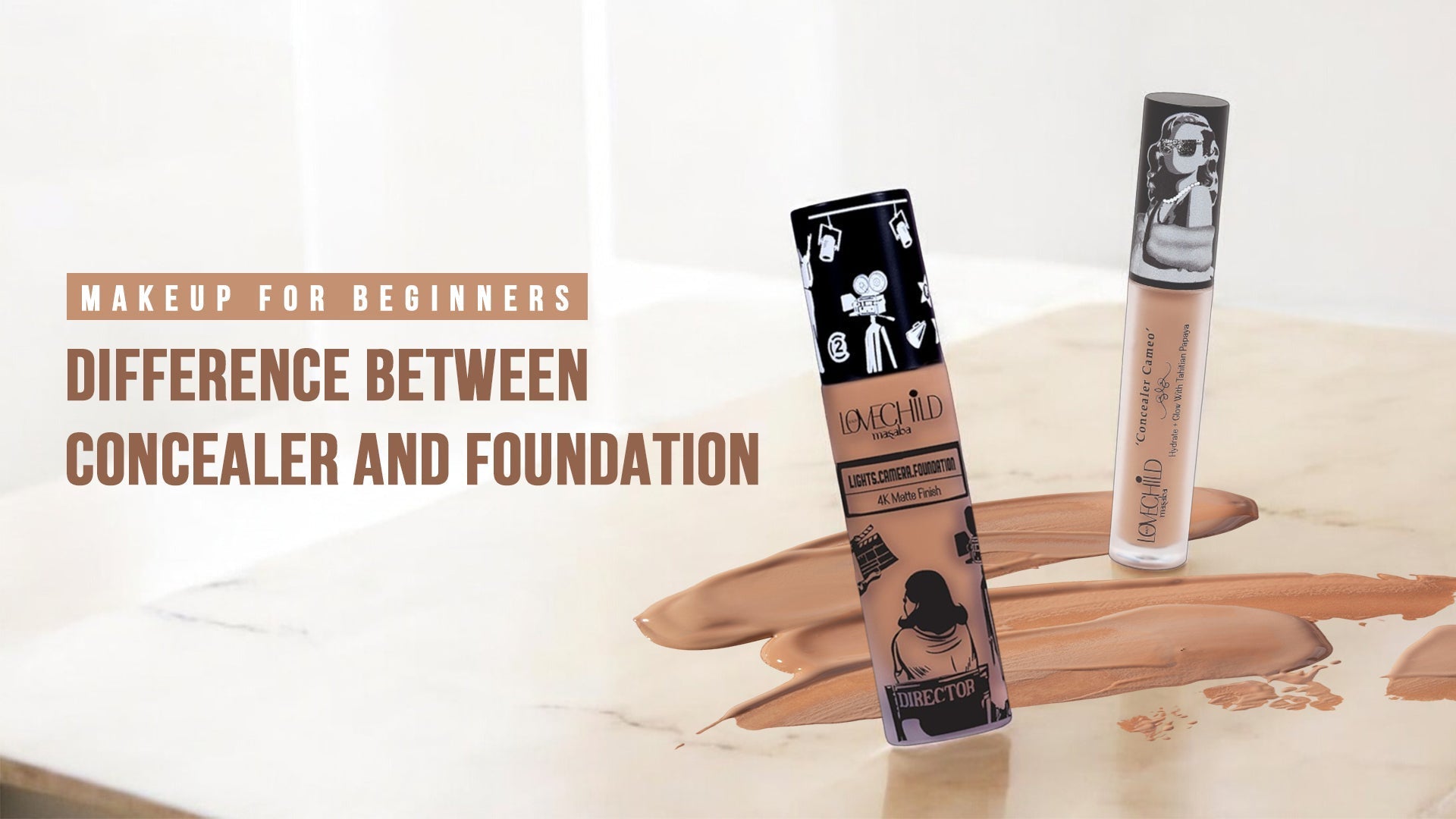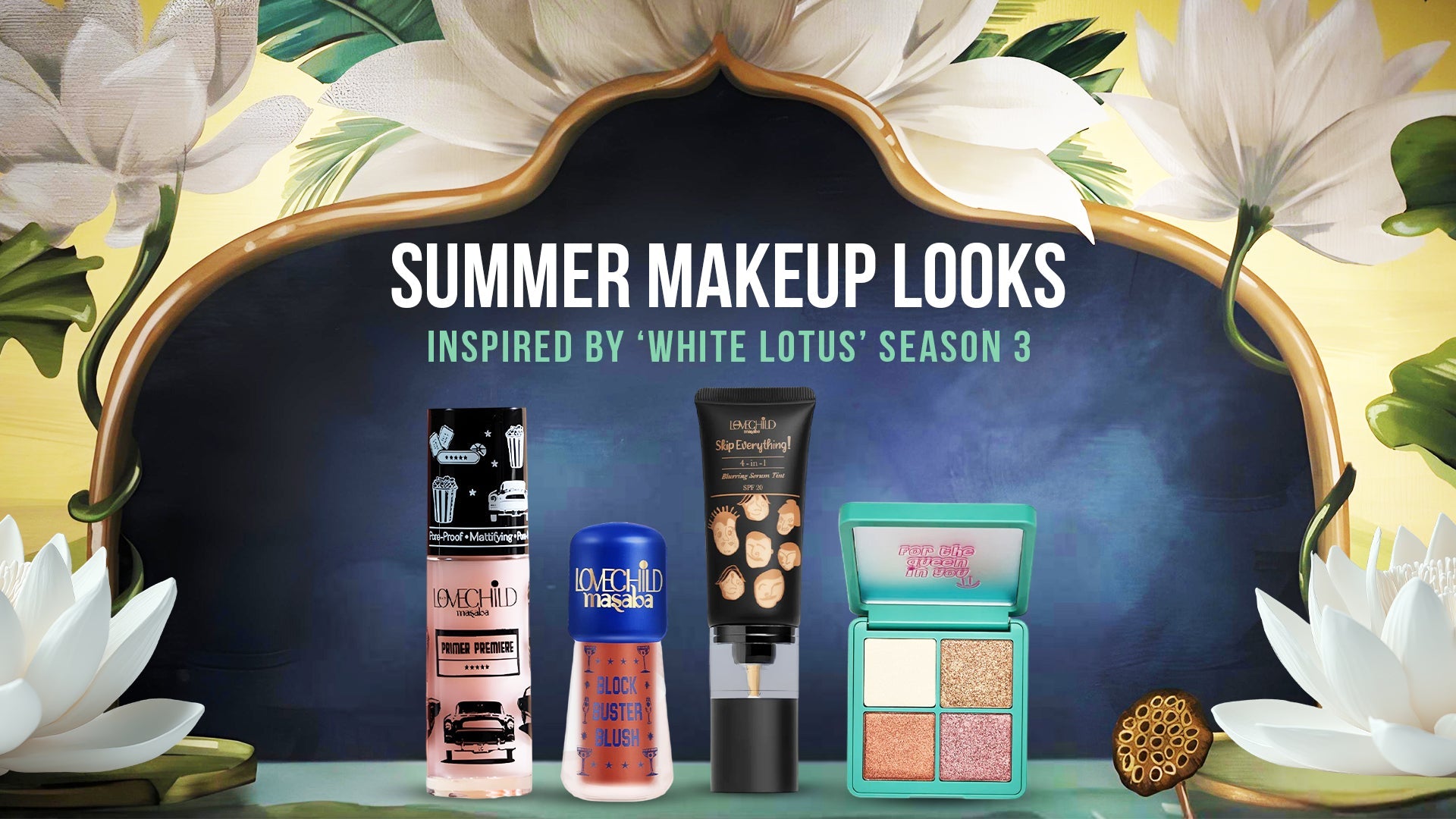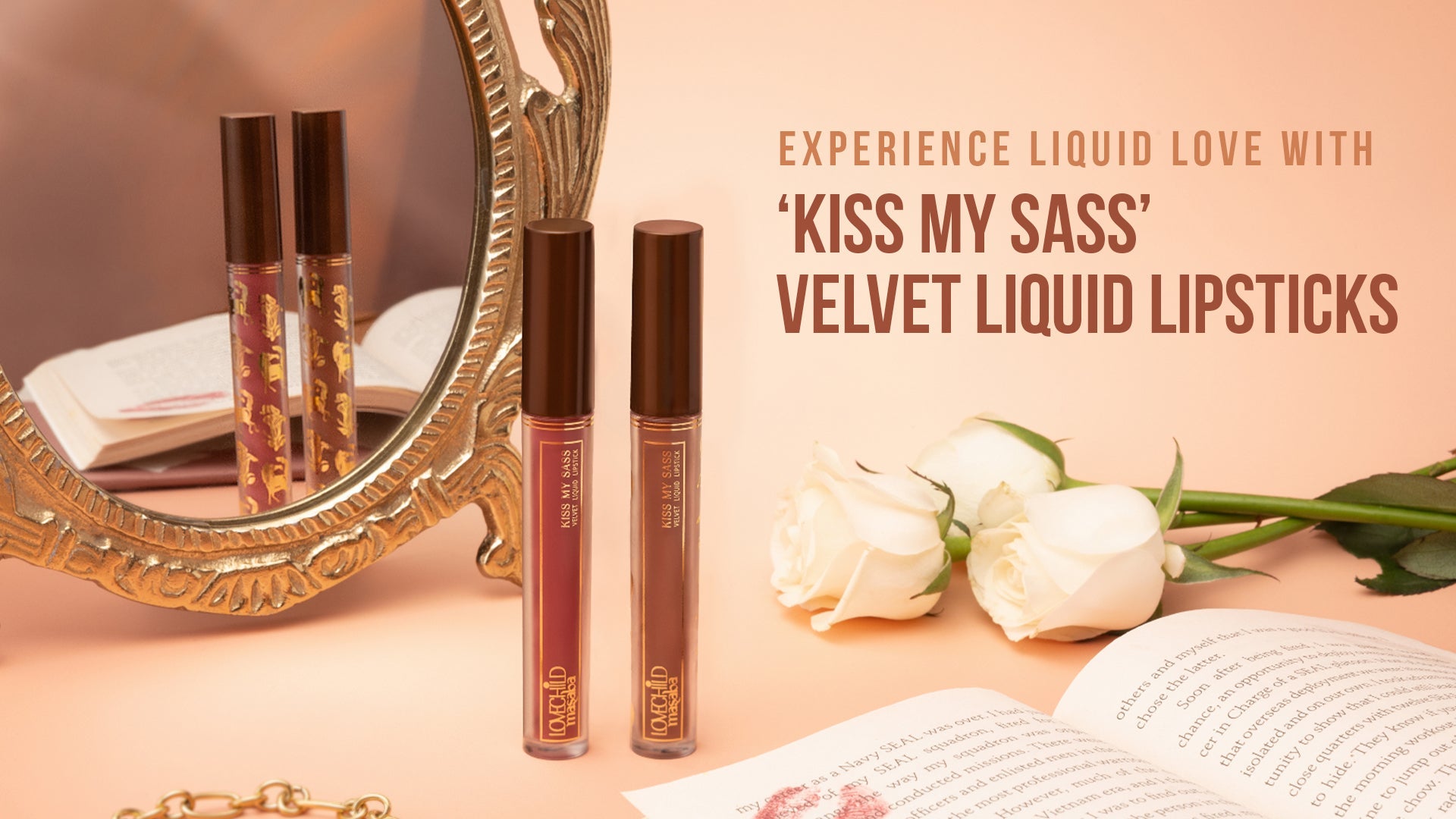Hey beauties! For all beginners who are stepping into makeup, we know it can be a little overwhelming to understand what different makeup products do. In this article, we will help you decode the difference between two makeup essentials - concealers and foundations. LoveChild is here to give you the complete rundown on the basic difference between concealer and foundation and give you a quick guide on how you can incorporate them into your makeup routines!
What is a Foundation?
A foundation quite literally sets the tone of any makeup look. Designed to even out your natural complexion, a foundation makes for a flawless base that blurs pigmentations and creates a smooth canvas for the rest of your makeup layers.
Levels of Coverage
There are various types of coverages in foundations. For those who like to keep things minimal, lightweight foundations like LoveChild skin tints are a good choice as they moisturize and give subtle coverage as well.
Medium and full coverage foundations, on the other hand, provide more coverage that conceals pigmentations and signs of redness as well. A full coverage foundation gives an even complexion by covering over breakouts, acne scars, melasma and even enlarged skin pores. If picking the right foundation feels like a task, then simply check out our Foundation shade finder to pick your perfect foundation shade or read our guide on How To Choose A Foundation.
How to Apply a Foundation?
To apply a lightweight foundation, you may choose to use your fingertips or opt for a foundation brush. You may also use a damp sponge for uniform blending. If you are going for a medium to full coverage foundation, it is recommended that you use a blending brush like the Swipe Right brush that gives you even coverage with a super-easy-to-use applicator brush. Make the foundation application journey even more convenient with our Foundation and Blending Brush Combo!
Texture and Finish
A foundation comes in various textures, such as liquid, cream, powder, and even stick formats (just like the LoveChild’s Mini Foundation Sticks!).
It is imperative to note that the finish of the foundation you choose depends on its formula and texture. While some foundations are dewy, some others offer a matte coverage.
Our liquid ‘Lights, Camera, Foundation!’ offers buildable coverage with a seamless 4K Matte finish. This hydrating foundation is designed in a transfer, and humidity resistant formula, perfect for full day wear.
What is a Concealer?
While foundations are more focused on coverage, concealers, on the other hand, are mainly used for color-correcting blemishes and pigmentations caused by acne or breakouts. Available in both liquid and creme formulations, they are used for spot-concealing areas that are prone to discolouration, like the forehead and under eyes mostly. With various textures and formulations available, the main concealer and foundation differences are to do with coverage and color-correction requirements in makeup.
Concealer not only helps hide any inconsistencies on the skin but it also is a great way to add brightness to the parts of the face that need lifting, like the under eyes. It is advisable to choose one shade lighter than your skin tone to achieve a skin-brightening effect.
To properly understand what shade of concealer fits you, you can check out our virtual Concealer Shade Finder.
Application Techniques
Usually the packaging of a concealer, like Concealer Cameo, is specifically designed with a wand so that you can spot conceal.
Spot concealing means dabbing a small amount of concealer on the specific area like the dark spot or scar.
For a seamless look, it is important to blend the concealer well. You can use your ring finger to gently dab the product till there are no harsh edges. Brushes and sponges are also great to make the concealer blend in an ‘airbrushed’ finish.
Types of Coverage
Concealers also come in different coverage levels, from sheer to full, depending on the intensity of the skin concern.
Light coverage helps when your skin has minor inconsistencies. Medium coverage concealers help hide more noticeable blemishes while still keeping things balanced.
If you want to cover strong blemishes and redness and still look great in photos, full coverage concealers are the way to go.
Formula and Texture
Similar to foundation, concealers are also available in liquid, cream, balm, and stick formulations. Liquid concealers are the most popular, while cream and balm formulas add extra hydration. Stick concealers are best for covering small, targeted areas.
LoveChild’s Concealer Cameo
Which One to Apply First? Concealer Or Foundation?
What comes first, foundation or concealer? This question might seem daunting, but it isn’t! At least once you know the logic behind it. While there is no rule book about the whole ‘concealer first or foundation’ debate, here’s how MUAs approach it:
For most makeup routines, foundation goes on first, followed by concealer only where needed. This helps you use less product while still getting a smooth, flawless finish. Applying foundation overall and concealer only on pigmented areas of the face is a good way to give the face a natural makeup feel.
Anyone dealing with strong discolouration can start with concealer to even out those areas, followed by foundation for a smooth and balanced finish.
There you go, beauties, we hope that clears the air on the difference between concealer and foundation for you! Both are meant to give us a flawless skin effect and while both help with blemishes and redness, their core utility the two. If your skin is fairly plain, you may just need foundation but if you have frequent acne scars, visible pigmentation, or dark circles then concealer is an absolute essential. So, pick what works best for you and make your skin look like you just walked in for a photoshoot!













